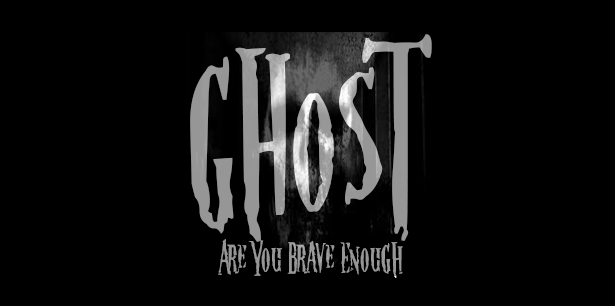Dark Shadows Unveiled: 22 Unspeakable Murders Unearthed in Haunting Tale of Jonathan Balls
- Gary Taylor-Green
- Jul 20, 2023
- 4 min read
In the desolate village of Happisburgh, amidst the sombre gloom of forgotten lives, there dwelled a man named Jonathan Balls. Oh, what tales of woe and terror whispered in the twisted shadows of his existence! An English serial killer, his sinister deeds shrouded in the cloak of darkness, left an

indelible mark upon the annals of horror.
Born in 1769, an enigmatic spectre veiled his early days, concealing the malevolence that lurked within his heart. From the murkiest depths of his blackened soul, he cast a pall of death over his kin, ensnaring them in his web of poison. A "bad character" they whispered, a man whose sins and crimes had painted the walls of a prison cell with hues of despair.
Elizabeth, his wife, bore witness to his twisted machinations, bringing forth three innocent daughters into the world. Alas, their purity was doomed, for the abyss within Balls hungered for their souls. Through his vile acts, he sought to divert the meagre support destined for his family, to consume it for his own selfish desires.
The fiendish dance of death commenced in the early 1830s, as Balls embarked on a sinister quest to acquire vast quantities of arsenic. Cunningly, he wove tales of infested rats, gnawing at the foundations of their humble abode. Maria Lacey, his own flesh and blood, became the first to succumb to his ghastly whims. The mists of cruelty swirled around her, intertwining with the tendrils of an unnamed ailment and the mercilessness of her spouse.
One fateful Christmas morn, the life of young Maria Green flickered and faded like a ghostly

candle in the night. Darkness clung to the lifeless body of Ann Peggs, an innocent grandchild who fell victim to a sinister ailment that plagued her tender frame. Death's relentless embrace continued its harrowing grip, claiming Martha Green and her brother William, stealing them away from the realm of the living.
In the stagnant air of Happisburgh, whispers echoed through the worn paths and decayed walls. The neighbours, their minds plagued by trepidation, beseeched the heavens for answers. Demanding justice, they pleaded for an inquest into the seemingly endless string of deaths. But their pleas were met with silence, and the malevolence thrived, shrouded in the darkness of the night.
Samuel Green, a grandson, met his untimely demise in the embrace of the cold earth. Shortly thereafter, Elizabeth, the bedridden wife, breathed her last, her soul ravaged by the horrors inflicted by her own beloved. But it was Elizabeth Anne Pestle, a granddaughter, who unknowingly embarked upon her final journey. Death's talons claimed her fragile form, leaving behind a wake of desolation and despair.
Then, as though the gods themselves had grown weary of this wicked tale, the curtain of life fell upon Jonathan Balls. Gripped by a sudden malady, he withered away, forever sealing his monstrous secrets within the grave. But the ghosts of his victims, restless and tormented, refused to find solace in oblivion.
Fear crept through the heart of the village, its chilling tendrils reaching into the deepest recesses of the community's soul. The cries for justice grew louder, piercing the veil of indifference. The coroner, Mr. Pilgrim, finally yielded to the relentless pleas and commanded the exhumation of Jonathan Balls and Elizabeth Pestle. A macabre gathering ensued, with the presence of churchwardens, police officers, and the spectre of the local pastor.
The corpses, pale and lifeless, whispered their tales of horror through the mouths of the coroners. An unnatural abundance of arsenic tainted their earthly vessels, a damning testament to the depravity that had plagued the family. The authorities, like hounds on the scent of terror, extended their inquiries to the living. Within the dim halls of the estate, they uncovered a maid named Sarah Kerrison, her eyes ablaze with fear. She recounted the malevolent act witnessed, the mysterious white powder sprinkled into a teacup, intended for the fragile lips of a sickly wife. And as Kerrison tasted the tainted morsels, she too became a casualty of the poison's dark embrace.
The tale of Jonathan Balls and his accursed bloodline spread like a virulent plague, casting its shadow over the realm. It seized the attention of the highest chambers of power, permeating even the hallowed halls of Parliament. There, amidst the flickering candlelight, discussions were held, and the need for an inquiry was demanded by the noble attendees. The Home Secretary himself, Sir James Graham, his voice laced with apprehension, vowed to delve deeper into the abyss that had consumed the lives of so many.
The echoes of the victims' names lingered, etched into the fabric of time as a haunting reminder of the horrors that transpired. Maria Lacey, Maria Green, Ann Peggs, Martha Green, William Green, Ann Elizabeth Pestle, Samuel Pestle, Elizabeth Anne Balls, and Elizabeth Anne Pestle. Each name resonated with the weight of terror and loss, forever etched in the darkness that engulfed Happisburgh.

And so, the tale of Jonathan Balls, a specter of malevolence, faded into the annals of history. Yet, the lingering spirits of his victims, forever trapped within the realm of the macabre, shall forever haunt the souls of those who dare to remember their tragic fate. The haunting whispers of their suffering echo through the corridors of eternity, a chilling reminder that evil can lurk even in the hearts we hold most dear. Jonathan Balls was buried in 1846 with a Bible, a poker, a pair of tongs, and a plum cake. No one seems quite certain why Ball requested to be buried with this odd assortment of objects, but what is certain is that Ball was a poisoner, who unwittingly drank a potion intended for one of his victims. When his body and those of his victims were exhumed, their corpses were found to contain arsenic. Ball was reburied with his odd collection of grave goods.










Comments